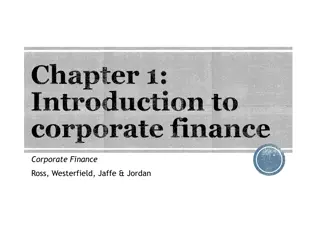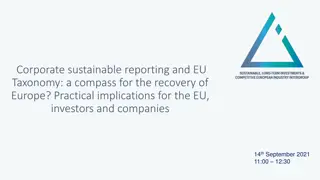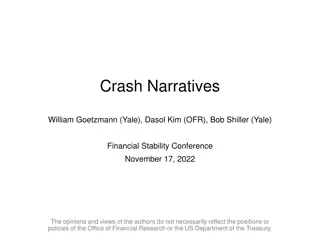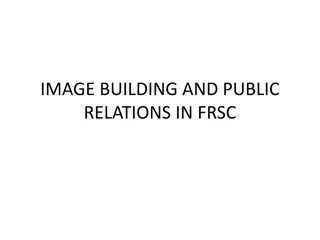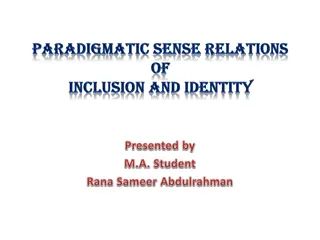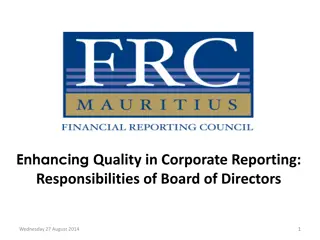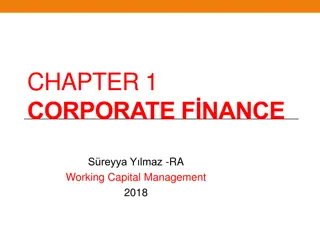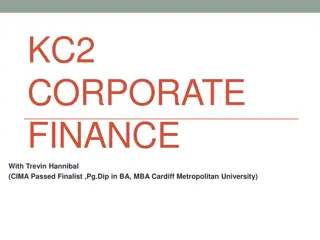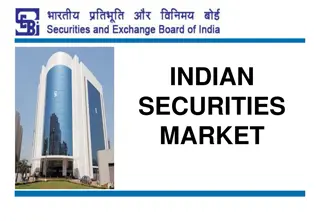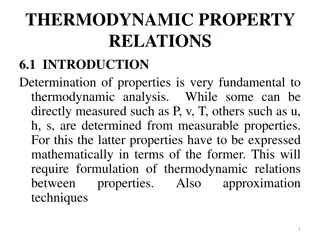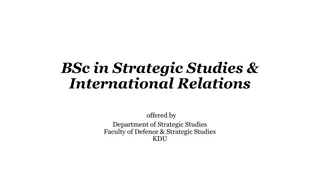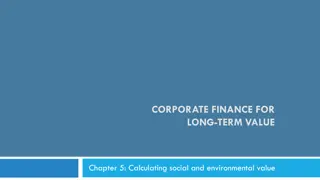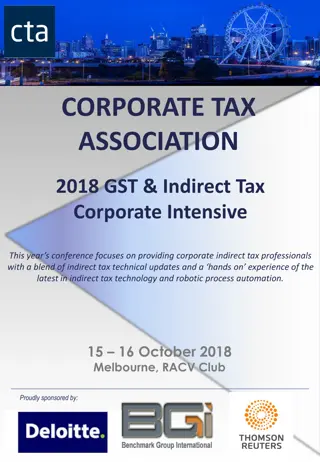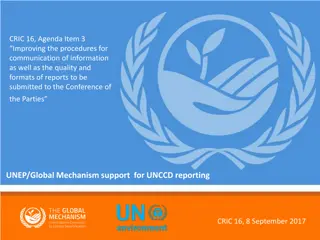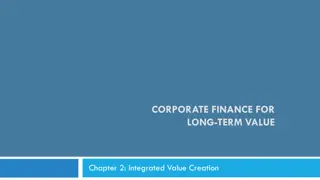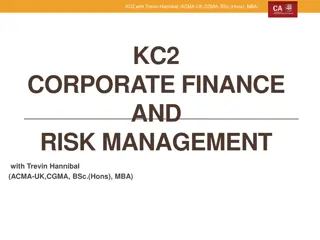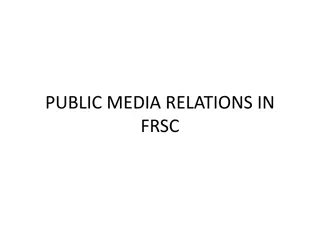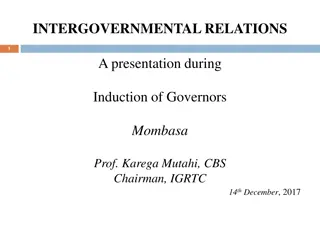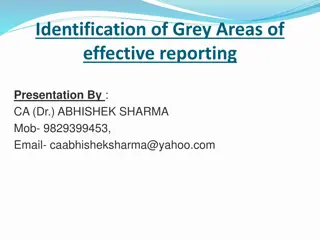Importance of Financial Reporting and Investor Relations in Corporate Finance
Financial reporting serves as a vital means of communication between corporate management and stakeholders, providing insights into a company's financial performance, social and environmental impact, and integrated value creation. Investor relations have expanded to include not only financial but also social and environmental information, enhancing transparency and accountability. Reporting standards like GAAP and IFRS ensure credibility and comparability, despite challenges such as diverse user needs and regulatory inconsistencies.
Uploaded on Sep 22, 2024 | 0 Views
Download Presentation

Please find below an Image/Link to download the presentation.
The content on the website is provided AS IS for your information and personal use only. It may not be sold, licensed, or shared on other websites without obtaining consent from the author. Download presentation by click this link. If you encounter any issues during the download, it is possible that the publisher has removed the file from their server.
E N D
Presentation Transcript
CORPORATE FINANCE FOR LONG-TERM VALUE Chapter 17: Reporting and investor relations
Part 5: Corporate financial policies Chapter 17: Reporting and investor relations
The BIG Picture 3 Financial reporting is a means of communication between corporate management and the company s stakeholders, including investors Discussion Companies issue several financial statements, like a balance sheet, a profit & loss account and a cash flow statement -> informs investors on financial performance Impact reporting can inform stakeholders about social and environmental factors Integrated reporting is about understanding how a company creates integrated value and how its activities affect the capitals it relies upon for this Investor relations presentations are expanding to social and environmental information in addition to financial information
Financial reporting 4 Financial reporting is valuable for communication with the outside world, including modelling by analysts Intangible assets, social value, and environmental value are gaining importance but are rarely shown in financial statements Addressed through regulation: only public companies and large private companies Over the centuries, accounting has become increasingly sophisticated to facilitate better decision-making, external monitoring and more complex transactions
Reporting standards 5 Generally Accepted Accounting Principles (GAAP) were developed to make reporting across companies more comparable used by U.S. companies International Financial Reporting Standards (IFRS) are issued by the International Accounting Standards Board (IASB) used by non-U.S. companies Eccles and Saltzman (2011) claim that financial reporting has institutional legitimacy, due to: Measurement, reporting, and auditing standards Effective enforcement mechanisms Sophisticated internal control and measurement systems Information technologies allowing for rapid capture and aggregation of data
Limits to financial reporting 6 Difficulty in dealing with diverse user needs Poor comparability Backward looking vs forward looking needs Focused on manufactured & financial assets, not intangibles Inconsistencies in regulation Focus on compliance
Financial statements 7 Financial statements give users insight into a company s financial position and performance Consist of: Balance sheet Income statement Cash flow statement Materiality is the degree to which certain issues are important for a company The need to disclose individual items or groups of items separately depends on the nature and the amount of the item
Financial statement analysis 8 Financial statement analysis is the process of reviewing and analysing a company's financial statements by external stakeholders Calculation of financial ratios to gain insights in the company s ability to generate value Internal stakeholders use more detailed internal reports to monitor and improve efficiency, and to provide the basis for external reporting Five categories of financial ratios: Profitability ratios Liquidity ratios Leverage ratios Efficiency ratios Valuation ratios EBIT margin Gross margin Return on assets (ROA) Return on Equity (ROE) Etc. Current ratio Quick ratio Interest coverage ratio Etc. Debt-to-assets Debt-to-equity Etc. Asset turnover Inventory turnover Etc. Price-earnings Market-to-book Etc.
Balance sheet 9 The balance sheet, or statement of financial position, lists a company s assets and liabilities The difference between assets and liabilities is a company s net worth (equity) The net working capital is the capital available in the short term to run the business: Net working capital = current assets current liabilities Inditex Group Consolidated balance sheet (amounts in millions of euro) 2019 16,977 8,355 270 6,660 1,692 11,414 2,269 954 3,411 4,780 Assets Long-term assets - Property, plant and equipment - Investment properties - Intangible assets - Other long-term assets Current assets - Inventories - Accounts receivable - Other current assets - Cash Liabilities and equity Long-term liabilities - Long-term debt - Deferred taxes - Provisions - Other long-term liabilities Current liabilities - Short-term debt - Accounts payable - Other current liabilities Equity - Issued share capital - Share premium - Retained earnings - Other reserves Total liabilities and equity 2020 15,460 7,401 282 6,122 1,656 10,957 2,321 972 266 7,398 2020 5,529 2019 6,136 Maturity over one year 3 6 396 252 370 217 4,879 6,338 5,543 7,306 Maturity of one year or less 11 32 4,747 1,579 14,550 5,585 1,689 14,949 Book value of equity 94 20 94 20 14,703 (267) 26,418 14,993 (158) 28,391 Total assets 26,418 28,391
Balance sheet distortions 10 The balance sheet gives an incomplete picture of a company s equity value: It reflects the shareholders investment in the company Several assets (i.e. buildings) are at historical cost net of depreciation Several intangible resources (i.e. brand value) are not capitalised Many valuable assets and liabilities are not on the balance sheet (i.e. human capital) Assets Liabilities Tend to be understated Tend to be understated Equity Likely to be distorted = the balance of assets & liabilities
Market value of equity 11 The book value of equity is likely to deviate from the market value of equity The market value of equity is a company s market capitalisation and depends on what investors expect a company s assets to produce in the future Market value of equity = Shares outstanding x Market price per share Problem: Inditex has 3.1 billion shares outstanding at 26.4 per share on 31 December 2020. What is Inditex s market cap(italisation)? How does it compare to its book value in 2020? Solution: Inditex s market cap: 3.1 billion shares x 26.04 = 82.1 billion Inditex s book value of equity is 14.6 billion (see previous slide), so market cap is far higher
Market to book ratio 12 The market to book ratio (or price to book ratio) is a valuation metric used to evaluate a company's current market value relative to its book value: Market value of equity Book value of equity Market to book ratio = The difference between market value and book value reflects expected abnormal or residual profitability A market-to-book ratio above one suggests that the company is expected to generate residual profits in the future Inditex s market to book ratio is 82.1 billion / 14.6 billion = 5.62 Interpretation: investors are prepared to pay 5.62 times the amount of Inditex s book value per share
Income statement 13 The income statement, or profit and loss (P&L) Inditex Group Consolidated income statement (amounts in millions of euro) account, lists a company s revenues and expenses 2020 2019 Sales 20,402 28,286 The key metrics are: Cost of sales (9,013) (12,479) Gross profit 11,390 17,806 Earnings before interest and taxes (EBIT) Operating expenses (6,838) (8,209) Depreciation and amortisation (3,045) (2,826) EBIT = Revenues Expenses - Depreciation Operating profit (EBIT) 1,507 4,772 Financial results (interest income/expense) (106) (91) Net profit Profit before taxes 1,401 4,681 Net profit = Revenues Expenses Depreciation Interest Corporate tax (297) (1,034) Net profit 1,104 3,647 payments - Corporate tax Earnings per share 0.355 1.168 Earnings per share Earnings per share = Net Profit / Number of shares outstanding
Cash flow statement 14 Inditex Group The balance sheet and income statement can be Consolidated cash flow statement (amounts in millions of euro) influenced by management to smooth profit over the years 2020 2019 Operating activities Net profits Depreciation and amortisation Other non-cash items Cash effect of changes in working capital Inventories Accounts receivable Accounts payable Cash from operating activities Investment activities Capital expenditures Acquisitions Other investment activity Cash from investment activities Financing activities Sale (or purchase) of stock Changes in debt Dividends paid Other financial activities Cash from financing activities 1,401 3,045 (582) 4,681 2,826 (811) The underlying cash flows are not sensitive to accounting policies cash does not lie 93 34 201 (10) 14 6,900 (974) 3,017 The cash flow statement has three sections: (672) (5) 3,191 2,514 (1,112) - (1,264) (2,377) Cash from operating activities Cash from investment activities - (23) - (52) Cash from financing activities (1,090) (1,673) (2,786) (2,741) (1,836) (4,629) Differences between income statement and cash flow Change in cash and cash equivalents Cash at beginning of the year Effects of exchange rates on cash Cash at the end of the year 2,745 4,780 (127) 7,398 (106) 4,866 statement are usually caused by depreciation 20 4,780
Audits 15 Publicly listed companies are required to have their financial statements reviewed or audited by an auditor An auditor is a chartered accountant that is qualified to audit financial statements The auditor s objectives are to obtain reasonable assurance about whether the financial statements as a whole are free from material misstatement and to issue an auditor s report that includes the auditor s opinion There are two levels of audit assurance: Reasonable assurance, a high level of assurance, but not a guarantee Limited assurance, a lower level of assurance, but sufficient to form conclusions Big Four accounting firms
Audits 16 The auditor evaluates the appropriateness of accounting policies applied and the reasonableness of accounting estimates made by a company s directors The going concern principle assumes that during and beyond the next reporting period a company will complete its current plans, use its existing assets and continue to meet its financial obligations The auditor s opinion is the main instrument for an auditor to inform financial statement users about his findings: Unmodified opinion: the auditor concludes that financial statements give a true and fair view of the company Modified opinion: Qualified opinion: given when misstatements are material but not pervasive Adverse opinion: given when the auditor concludes that misstatements are both material and pervasive
Accounting scandals 17 The collapse of Enron in 2001, the largest corporate bankruptcy at the time in American history, involved the use of accounting loopholes, special purpose entities, and poor financial reporting Management of the energy company was able to hide billions of dollars in debt from failed deals and projects, inflating Enron s accounts and performance Enron s bankruptcy led to the closure of its accountant, Arthur Anderson, which was found guilty of illegally destroying documents relevant to the SEC investigation Another scandal concerned Germany company Wirecard Allegations of accounting malpractices culminated in 2019 when the Financial Times published whistle-blower complaints and internal documents In June 2020, Wirecard filed for insolvency after revealing that 1.9 billion was missing, and the arrest of its CEO Questions were raised about regulatory failure of the German supervisor, BaFin, and possible malpractice of Wirecard s long time auditor EY
Investor relations 18 The investor relations (IR) department at a company informs current and prospective investors about the company s financials, strategy, operations, etc. Responsibilities include: Publishing financial reports and other externally oriented material Organising meetings with investors and presenting the company Typical points made in an IR presentation: Pitch: why invest in this company? Key products and markets, the company s competitive edge & challenges Looking back: recent earnings history, product introductions, macro/market environment & actions Looking forward: plans, prospects for growth or cost cutting
BMW investor slide 19 BMW starts their presentation by asking and answering: why invest in BMW? FIRST FIRST- -CLASS INDIVIDUAL MOBILITY CLASS INDIVIDUAL MOBILITY We play a pioneering role tomorrow. It combines pleasure and responsibility combines pleasure and responsibility without compromise pioneering role in setting standards for the individual premium premium mobility of SUSTAINABILITY SUSTAINABILITY The BMW Group is a holistically sustainable company Every investment in BMW is a sustainable investment. sustainable investment. holistically sustainable company taking responsibility for sustainable future mobility. responsibility for sustainable future mobility. INNOVATION & FLEXIBILITY INNOVATION & FLEXIBILITY The MBW Group is an innovation pioneer based on constant transformation constant transformation and flexibility innovation pioneer in the automotive industry. Our business model is flexibility successful for over 100 years. ELECTRIFICATION ELECTRIFICATION Due to our flexibility vehicle vehicle offer covering 90% covering 90% of our current market segments from 2023. flexibility and permanently transformed plants, permanently transformed plants, we will have a convincing battery convincing battery- -electric electric DIGITALISATION DIGITALISATION We set standards in the digitalisation remote software upgrades. remote software upgrades. digitalisation and connectivity connectivity of our vehicles and use our competitive edge in competitive edge in FINANCIAL PERFORMANCE FINANCIAL PERFORMANCE We offer financial stability We set ambitious profitability ambitious profitability and cash flow targets financial stability due to our strong balance sheet cash flow targets and are a reliable dividend payer. balance sheet and industry-leading credit ratings. reliable dividend payer. credit ratings.
Sustainability-related financial reporting 20 Sustainability reporting is in transition In 2021, the International Sustainability Standards Board, a new body of the IFRS, consolidated several voluntary reporting initiatives: Task Force on Climate-related Financial Disclosures (TCFD, 2017), Sustainability Accounting Standards Board (SASB) Integrated Reporting (<IR>) IFRS standards IASB The IFRS now has two bodies: IFRS International Accounting Standards Board (IASB) IFRS ISSB sustainability standards International Sustainability Standards Board (ISSB) New IFRS sustainability standards are mandatory, part of financial reports and subject to audit control Contains disclosure requirements for sustainability information relevant for the company s financial value (inward)
IFRS S1 and S2 21 In 2023, IFRS issued 2 standards: IFRS S1: General Requirements for Disclosure of Sustainability-related Financial Information Sets the general framework for disclosure of sustainability risks and opportunities related to the company s financial value Requires that company shall provide disclosure about: Governance procedures used to monitor and manage sustainability risks and opportunities Strategy for addressing material sustainability risks and opportunities Risk management used to identify, assess and manage sustainability risks Metrics and targets used to assess, manage and monitor the company s performance IFRS S2: Climate-related Disclosures More detailed requirements for the disclosure of several climate topics Report in relation to the planetary boundaries of climate change (1.5 C, 2 C or 3 C limit)
Material topics per industry 22 SASB Standards vary by industry, based on the different sustainability risks and opportunities within an industry SASB categorises 77 industries, the material topics for three industries are presented below: Apparel, Accessories & Footwear Hotels and Lodging Materials & Mining management of chemicals in products environmental impacts in the supply chain labour conditions in the supply chain raw materials sourcing energy management water management ecological impacts labour practices (including average hourly wage) climate change adaptation GHG emissions air quality energy management water management waste & hazardous materials management biodiversity impacts human rights (including those of indigenous people) community relations labour relations workforce health & safety business ethics tailings storage facilities management Some industries have more material topics than others
Sustainability reporting case study 23 AkzoNobel, a large Dutch paints and coatings manufacturer, provides an example of voluntary reporting on social and environmental topics in its annual report Under the headings People, Planet and Paint, AkzoNobel provides detailed numerical information on material topics, including some targets for 2025 Social topics include work health and safety, gender diversity, and community training Environmental topics include carbon emissions, waste, and fresh-water usage In line with best practice, AkzoNobel does not only provide information on its own operations, but also on its contractors in the supply chain and its products While AkzoNobel s reporting is advanced, it still does not give sufficient information to assess the company s value creation and destruction for society and nature
Convergence in reporting 24 Convergence from voluntary to mandatory reporting is needed to enable comparability Similarly, convergence of financial and impact materiality is occurring, mostly because outward issues are increasingly seen as inwardly relevant as well Inward focus Inward focus Material topics: - GHG emissions - Pollution - Biodiversity loss - Use of scarce resources - Work health & safety - Living wage - Gender diversity - Business ethics Material topics: - GHG emissions - Labour practices - Business ethics Outward focus Broad range of material topics Outward focus Other material topics: - Human rights
Impact reporting frameworks 25 The major emerging impact reporting frameworks, which are all voluntary, include: Integrated Capitals Assessments Impact-Weighted Accounts Framework (IWAF) Value Balancing Alliance (VBA) Impact frameworks make use of four capitals: financial, social, human and natural capital Basics of impact reporting Identification of material impacts across value chain Reflect current and future value enjoyed by stakeholders Measurement of impact Using a baseline or reference Comparability - valuing in common currency Reflects the true price of social and environmental factors Aggregation of impact within welfare categories While remaining conscious of the elements being aggregated Attribution of impact across value chain Double counting of impact should be avoided Presentation of impact statement Presents a company s value creation and reduction
Integrated statements 26 Internal management information systems contain a wealth of information, of which only a small subset is externally reported This externally reported data is just a subset of the total body of externally available data about the company s performance: complemented by data from NGOs, researchers, consultants, etc. Internal management information Stakeholders access to information Integrated reporting
Producing integrated statements 27 While accounting records past transactions in company financial statements (backward-looking), finance tries to assess the effect of future events (forward-looking) Integrated profit & loss (IP&L) statements show what happened last year and registers the revenues, expenditures and impacts over this period Main challenges: revaluation of assets and reorganisations Compiling an integrated balance sheet is more challenging There is a big tension between the historical value or cost-price of assets, and the forward-looking earning power of assets The aim of integrated reporting is to inform stakeholders, allowing them to form a balanced opinion on the value of the company
Integrated audits and investor relations 28 Currently, there is lack of relevant auditor skills and international standards are still in the process of being adopted for integrated reporting European Sustainability Reporting Standards (ESRS) require limited assurance for the first years of implementation (from 2024/2025) and reasonable assurance thereafter Integrated IR means that the IR role is expanded to inform investors on the company s value creation on E, S, and F Typical points made in an integrated IR presentation Pitch: why invest in this company? How does it create value on E, S and F? Key products and markets, the company s competitive edge & challenges. What value creation on E, S and F look like per business unit and how they interact Looking back: recent value creation history on E, S and F, product introductions, macro/market environment & actions Looking forward: plans, prospects for growth or cost cutting, how to achieve better value creation on E, S and F
Conclusions 29 Financial reporting is a means of communication between corporate management and the company s stakeholders, including investors Companies issue several financial statements, like a balance sheet, a profit & loss account and a cash flow statement Impact reporting can inform stakeholders about social and environmental factors Integrated reporting is about understanding how a company creates integrated value and how its activities affect the capitals it relies upon for this Investor relations presentations are expanding to social and environmental information in addition to financial information





